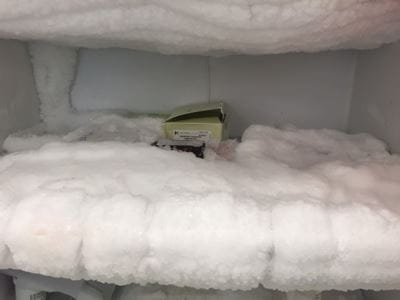- The Heart. The heart of the wet lab is storage space. Without storage it would be impossible to pause the analysis of a sample once it has begun. This would mean spending consecutive days, weeks, months in lab. No thank you. Storage allows me to pause my experiment at the end of the day knowing that tomorrow I will not need to repeat the same steps that I have just performed.
- The Circulation. My lab studies blood and the vasculature. Our members seek to understand the origin, function, and dysfunction of the circulatory system. We are a wet lab; our studies rely on physical objects—animals, cells, isolated biological samples—to model the circulation. We collect a great deal of data, which we store in computer files, notebooks, and publications. We also collect a large amount of biological samples: cell lines, histology samples, DNA, RNA, proteins. Many of these samples cannot be turned into raw data immediately. They must be stored.
- The Ventricles. Not all samples are stored in the same manner. The Heart therefore has four distinct chambers: The Minus Eighty, The Minus Twenty, The Four Degree, and The Bench. Each has its purpose: DNA in the Twenty, proteins in the Eighty, consumables at the Four. The Bench holds your PBS and your protocol sheet. Together: none is adequate. But combined they permit the smooth functioning of a lab.
- Angina. There’s always a warning sign of trouble. There’s a growing frost on the boxes in the Twenty. Humidified air seeping in? Nah: someone must have just held the door open pondering what they wanted to analyze after lunch. Later: the door is slightly agar. Blame the summer student. Give the “the freezer is the heart of the lab” speech. That’ll work; right?
- Infarct. Emergencies in research are few and far between. But arriving in lab to see a pool of water in front of the Twenty should put you in panic. Your heart has seized. DNA will survive a freeze-thaw, but RNA? Your enzymes? Years of work and tens of thousands of dollars are at stake. I know you’ve planned an important experiment this morning. But if you go ahead with it, where will you store your samples when you’re done? Prioritize: heart > data.
- BLS. Identify the problem. Can the door close? No: ice has built up along the shelves and is blocking the closure. Assess the situation. What’s the temperature? Are my samples still frozen? Darn: the ones closest to the opening have fully thawed. But they’re still cold. They may be rescued. Find a solution: knock away the ice. Hit it with a first. Nothing doing. Grab a chisel: pry away enough ice for the door to close. The seal is secure: I have bought time for a more permanent solution.
- Bypass. The procedure takes careful planning. Find a backup freezer and confirm it is available for use. Then collect as many boxes and pushcarts as you can find. The strategy: place the freezer items into the boxes, the boxes on the cart, and scurry them along to the backup freezer – which, of course, is on the other side of the building and floors away. You gather everyone in the lab and make sure they’re ready. On the count of three…go!
- Plaque. The rush is predictable: everyone grabs their own items to ensure the safety/continuity of their own experiments. But after this initial scramble, the freezer remains half full. What is this stuff? Expiry dates from the last millennium, names of lab members long gone. Much of it belongs in a museum. Or the trash.
- Recovery. The Twenty is empty; the backup is full. Time to clean the heart. The freezer is unplugged, the rest of the caked-on ice is chiseled away, and a fan thoroughly dries the chamber over the weekend.
- Restock. With the heart repaired, the lab proceeds to return our precious samples. Each researcher is keen to demarcate their own space. What about all the unclaimed items? The items that took up so much space that made the freezer unusable? We place them separately in the freezer and give others a week to claim them. Then: the trash.
- The Lesson. Items left in the freezer without proper documentation are of no use to the lab. Worse: by taking up freezer storage space they are a hazard to the work of others in the lab. That tube you stored in the freezer “just overnight” and is still there 2 years later? That’s the plaque that endangers the heart of the lab.
The Thawing Heart
Stefan Tarnawsky Oct 08, 2016

161008-ttl-fridge-1
Author
Stefan Tarnawsky
MS4 MD/PhD Student.
Going into Internal Medicine; interested in Heme/Onc.
Bread baker, bonsai artist, aspiring astronomer.
The views expressed in this content represent the perspective and opinions of the author and may or may not represent the position of Indiana University School of Medicine.